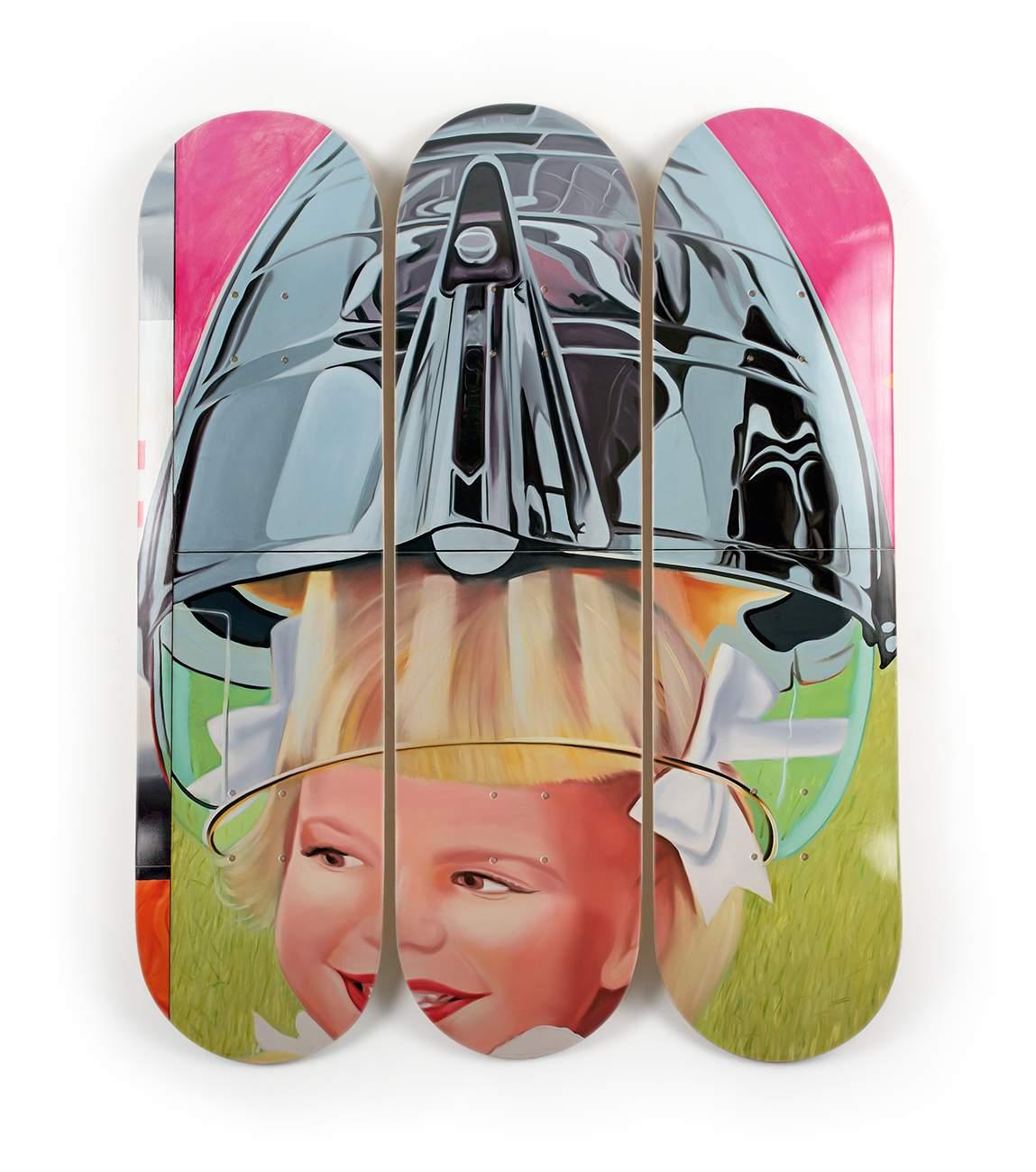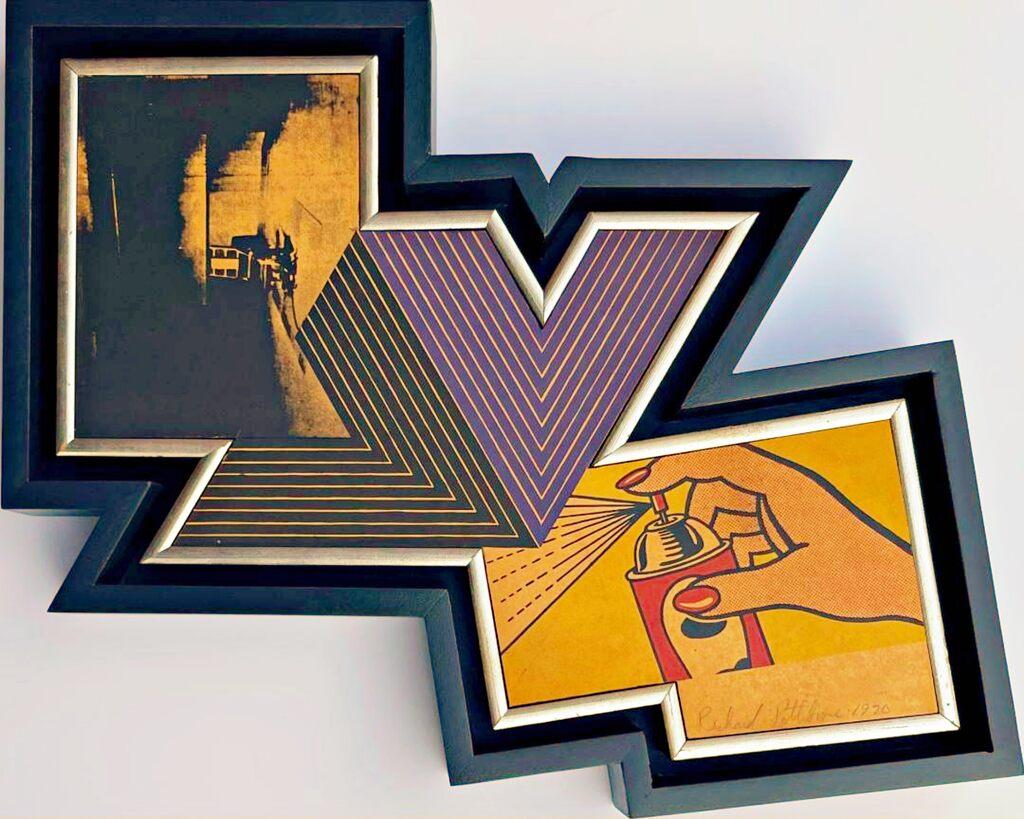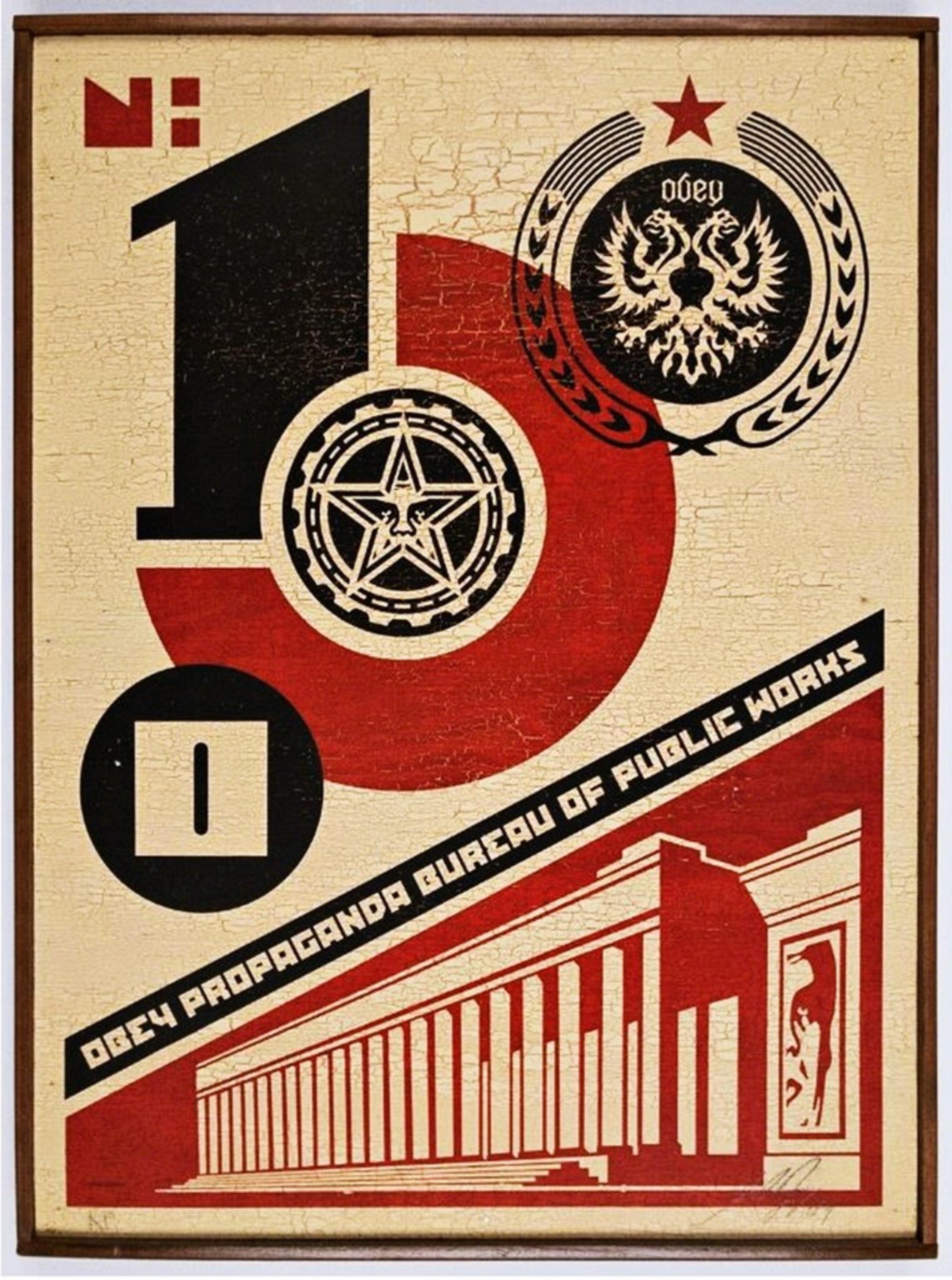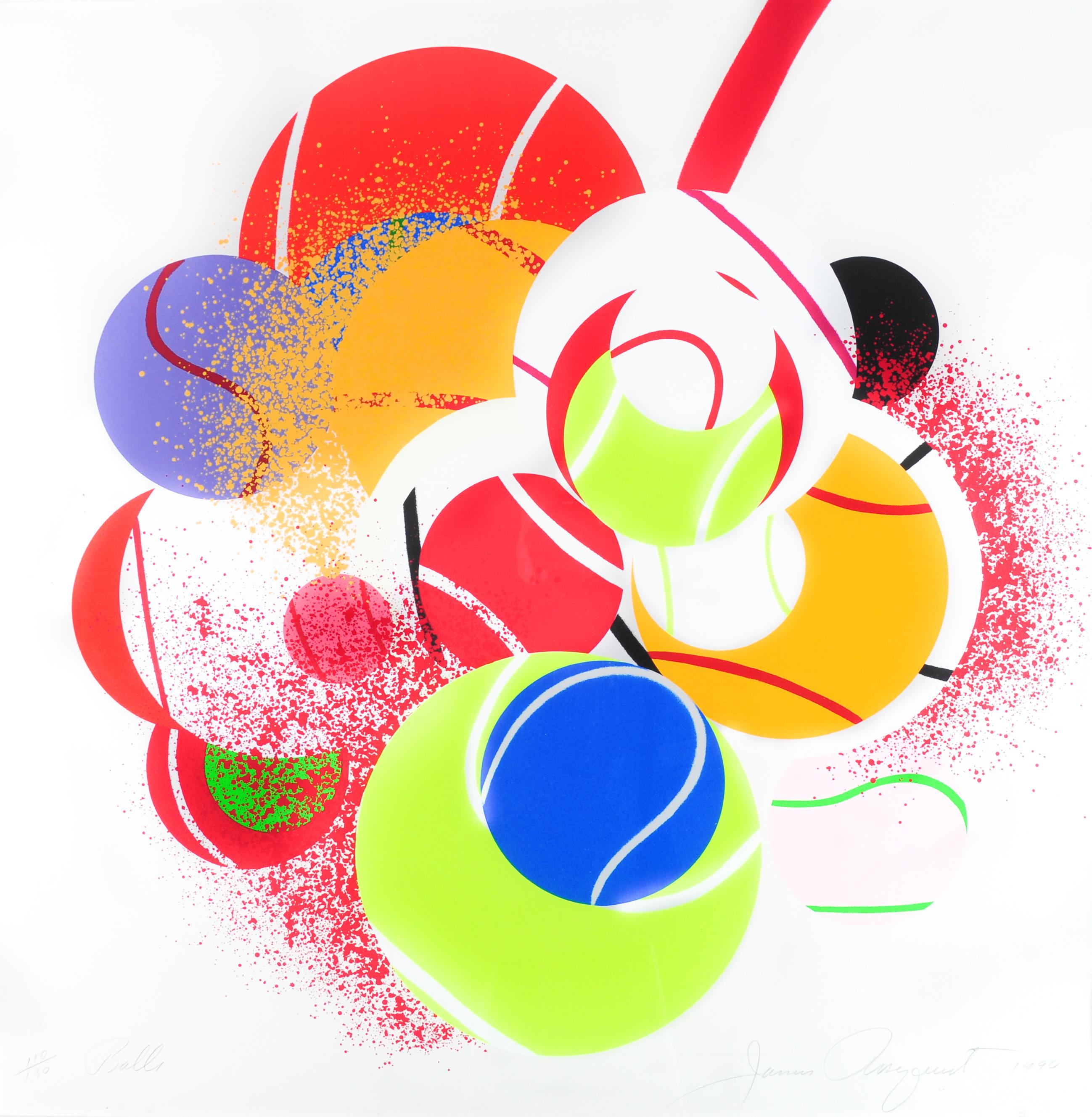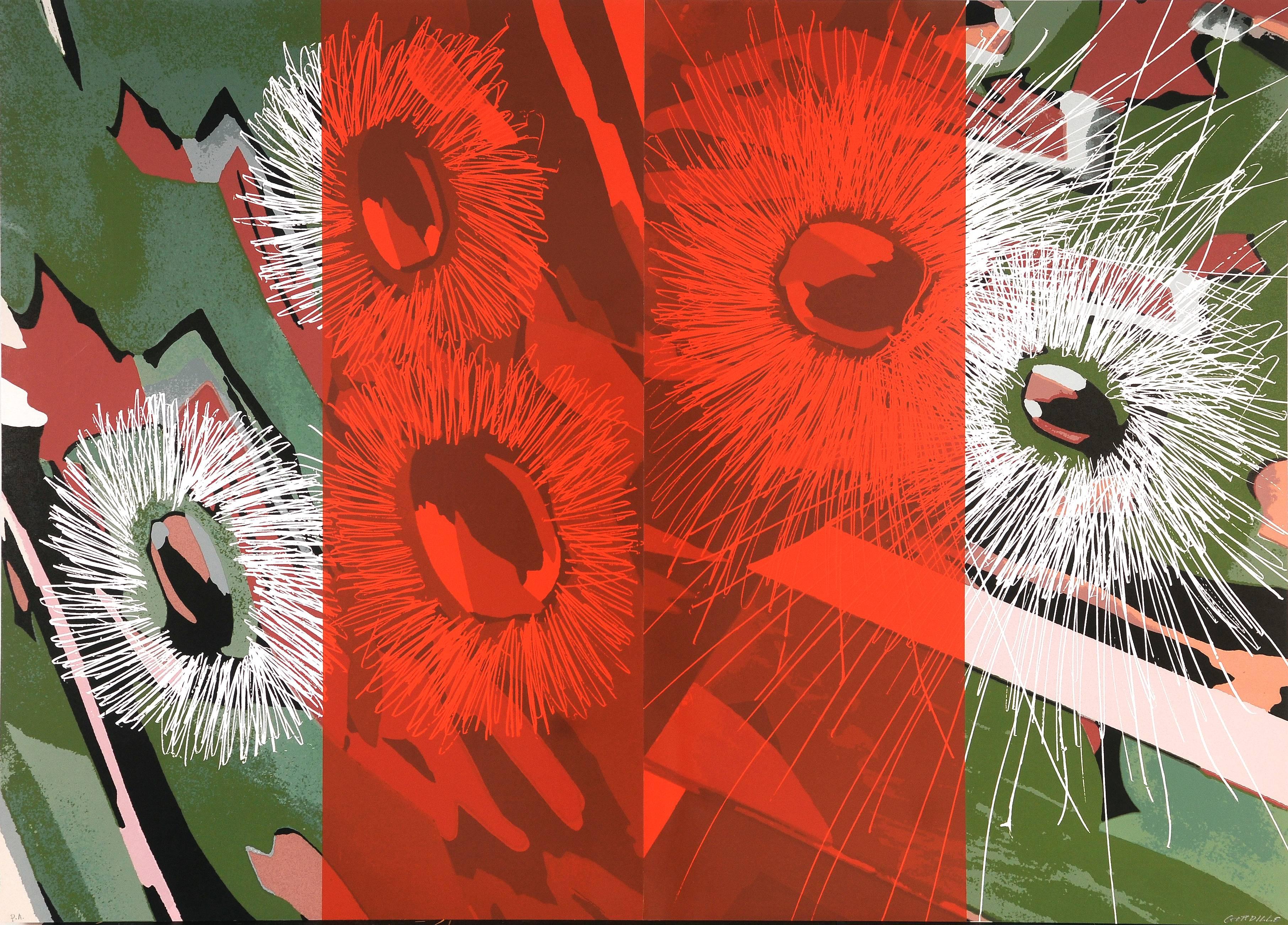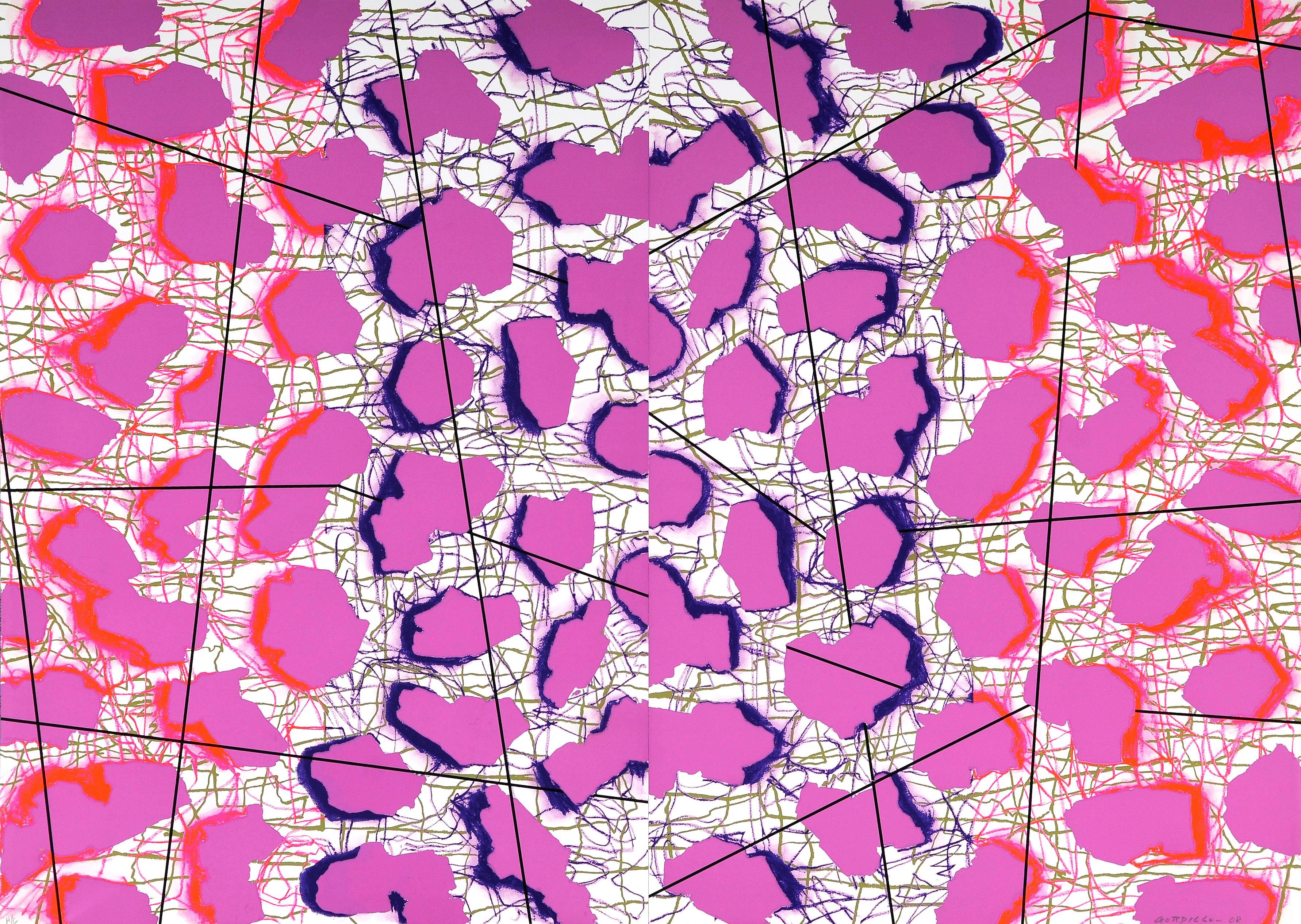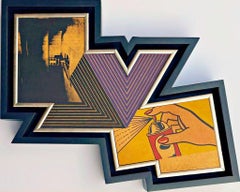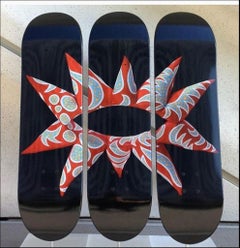
Andy Warhol FLOWERS (LIME/ORANGE) Limited Skate Deck Modern Design Pop American
Want more images or videos?
Request additional images or videos from the seller
1 of 3
Andy Warhol FLOWERS (LIME/ORANGE) Limited Skate Deck Modern Design Pop American2019
2019
About the Item
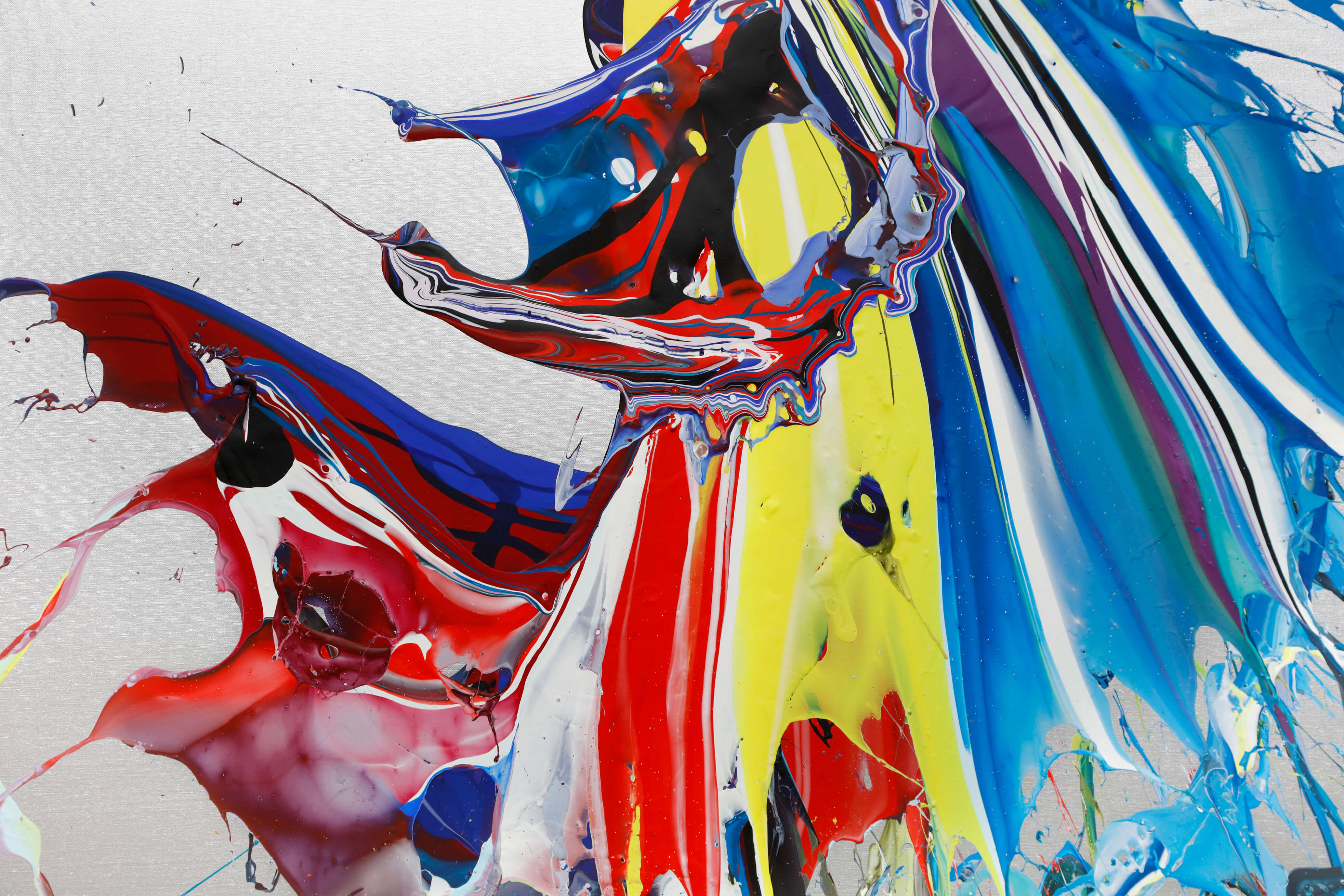
About the Seller
5.0
Vetted Seller
These experienced sellers undergo a comprehensive evaluation by our team of in-house experts.
Established in 2011
1stDibs seller since 2018
158 sales on 1stDibs
Typical response time: 3 hours
More From This SellerView All
- James Rosenquist F-111 TRIPTYCH (GIRL) Limited Skate Modern Design Pop AmericanBy James RosenquistLocated in Madrid, MadridJames Rosenquist F-111 TRIPTYCH A (GIRL) Date of creation: 2021 Medium: Digital print on Canadian maple wood Edition: 100 Size: 80 x 20 cm (each skate) Condition: In mint conditions ...Category
2010s Pop Art Abstract Prints
MaterialsWood, Maple, Screen
- James Rosenquist F-111 TRIPTYCH (ATOM) Limited Skate Modern Design Pop AmericanBy James RosenquistLocated in Madrid, MadridJames Rosenquist - F-111 TRIPTYCH A (ATOM) Date of creation: 2021 Medium: Digital print on Canadian maple wood Edition: 100 Size: 80 x 20 cm (each skate) Condition: In mint condition...Category
2010s Pop Art Abstract Prints
MaterialsWood, Maple, Screen
- Robert Rauschenberg - OVERDRIVE. Limited Skate Deck Modern Design Pop AmericanBy Robert RauschenbergLocated in Madrid, MadridRobert Rauschenberg - OVERDRIVE Date of creation: 2017 Medium: Digital print on Canadian maple wood Edition: 300 Size: 80 x 20 cm (each skate) Condition: In mint conditions and never...Category
2010s Expressionist Abstract Prints
MaterialsWood, Maple, Screen
- Eduardo Arranz-Bravo - BLUE AND WHITE HOUSE Lithograph Abstract Interior DesignBy Eduardo Arranz-BravoLocated in Madrid, MadridEduardo Arranz-Bravo - CASA AZUL Y BLANCA (BLUE AND WHITE HOUSE) Date of creation: 1988 Medium: Lithograph on paper Edition: 75 Size: 56 x 75 cm Condition: In perfect conditions and ...Category
1980s Abstract Abstract Prints
MaterialsLithograph
- Andrés Nagel - UNTITLED 5 Etching & Collage Spanish Contemporary ConceptualismLocated in Madrid, MadridAndrés Nagel - UNTITLED 5 Date of creation: 1991 Medium: Etching and collage on Paper Edition: 75 Size: 98 x 69 cm Condition: In very good conditions and never framed Observations: Etching and collage on paper signed by the artist and numbered edition of 75. Andrés Nagel belongs to that generation of Spanish artists that revolted against the abstraction and informalism, dominant in the exhibitions at museums and galleries during the 60s. Nagel's success is, without any doubt, due to his intrinsic honesty. The artist has always been loyal to his own particular style, no matter the artistic trend of the moment. ABOUT THE ARTIST Andrés Nagel Tejada is a Spanish painter, sculptor and printmaker born in San Sebastian in 1947. Nagel completed his studies in architecture in 1972 in Pamplona. During this time as a student he began to work in engraving techniques. Since then he starts to travel to other European countries and the north of Africa. The Spanish scene at that time was dominated by abstraction and already had international recognition thanks to artists such as Chillida and Tapies, but Andres Nagel, who didn't feel identified with these trends did tune with the artistic movements that found in other countries such as Italy, Switzerland and Germany and soon opted for figurative art. A controversial artist, he rose to prominence with some of his works at the beginning of his career. In the mid 70's Nagel started to show his works in many exhibitions, both collectively and individually. Noteworthy among these events, his participation in the exhibition "New Spanish Painting" on Hastings Gallery in New York that introduced him to the American public. In 1978 also participates in a very important exhibition that pays tribute to the work of Joan Miró in Mallorca. During the 80's the artist works in numerous international exhibitions in cities like Varna, Dortmund, Bonn, Basel or Baghdad. In 1988 the Museum of Fine Arts in Bilbao exhibits the graphic work of Nagel, in this show a catalogue raisonné is edited. In 1989 he began his collaboration with the gallery Tasende California and participates in many American art fairs. Thereafter Andrés Nagel travels the world and his work is present in several countries including Mexico, Japan, Singapore, China, France, Canada, Germany or Italy. In 2003 Nagel inaugurates in Amorebieta (Vizcaya) a bronze sculpture of eight meters high that he entitles "La patata" (the potato). Unparalleled defender of the intellectual property, the transfer of this work for urban reasons is considered by Nagel as an insult to his work, leading him to sue the city council. In 2009 re-litigated against a porcelain company that, according to the artist, plagiarizes his designs and get benefits from them without his consent. Andrés Nagel's work can be defined within the postmodern figuration...Category
1990s Conceptual Abstract Prints
MaterialsEtching
- Joan Miró - MARAVILLAS CON VARIACIONES... Lithograph Contemporary Art AbstractBy Joan MiróLocated in Madrid, MadridJoan Miró - Maravillas con variaciones acrósticas en el jardín de Miró XX Date of creation: 1975 Medium: Lithograph on Gvarro paper Edition: 1500 Size: 49,5 x 35,5 cm Condition: In v...Category
1970s Abstract Abstract Prints
MaterialsPaper, Lithograph
You May Also Like
- ROBOT Triptych (Set of Three (3) Skateboards)By Jean-Michel BasquiatLocated in New York, NYJean-Michel Basquiat ROBOT Triptych (Set of Three (3) Skateboards), 2017 Set of 3 Silkscreens on 7-Ply Canadian Maplewood Skate Decks (Set of 3) Estate of Jean-Michel Basquiat copyri...Category
2010s Pop Art Abstract Prints
MaterialsWood, Maple, Mixed Media, Screen
- The Appropriation piece: Andy Warhol, Frank Stella, Roy Lichtenstein Unique var.By Richard PettiboneLocated in New York, NYRichard Pettibone The Appropriation Print Andy Warhol, Frank Stella, Roy Lichtenstein, 1970 Silkscreen in colors on masonite board (unique variant on sculpted board) Hand-signed by artist, Signed and dated on the front (see close up image) Bespoke frame Included This is a rare example of Pettibone's iconic Appropriation Print, as it's silkscreened and sculpted on masonite board rather than paper, giving it a different background hue, and enabling it work to be framed so uniquely. The Appropriation print is one of the most coveted prints Pettibone ever created ; the regular edition is on a full sheet with white background; the present example was silkscreened on board, allowing it to be framed in 3-D. While we do not know how many examples of this graphic work Pettibone created, so far the present work is the only one example we have ever seen on the public market since 1970. (Other editions of The Appropriation Print have been printed on vellum, wove paper and pink and yellow paper.) This 1970 homage to Andy Warhol, Frank Stella and Roy Lichtenstein exemplifies the type of artistic appropriation he was engaging in early on during the height of the Pop Art movement - long before more contemporary artists like Deborah Kass, Louise Lawler, etc. followed suit. This silkscreen was in its original 1970 vintage period frame; a bespoke custom hand cut black wood outer frame was subsequently created especially to house the work, giving it a distinctive sculptural aesthetic. Measurements: Framed 14.5 inches vertical by 18 inches horizontal by 2 inches Work 13 inches vertical by 16.5 inches horizontal Richard Pettibone biography: Richard Pettibone (American, b.1938) is one of the pioneering artists to use appropriation techniques. Pettibone was born in Los Angeles, and first worked with shadow boxes and assemblages, illustrating his interest in craft, construction, and working in miniature scales. In 1964, he created the first of his appropriated pieces, two tiny painted “replicas” of the iconic Campbell’s soup cans by Andy Warhol (American, 1928–1987). By 1965, he had created several “replicas” of paintings by American artists, such as Warhol, Roy Lichtenstein (1923–1997), Ed Ruscha (b.1937), and others, among them some of the biggest names in Pop Art. Pettibone chose to recreate the work of leading avant-garde artists whose careers were often centered on themes of replication themselves, further lending irony to his work. Pettibone also created both miniature and life-sized sculptural works, including an exact copy of Bicycle Wheel by Marcel Duchamp (French, 1887–1968), and in the 1980s, an entire series of sculptures of varying sizes replicating the most famous works of Constantin Brancusi (Romanian, 1876–1957). In more recent years, Pettibone has created paintings based on the covers of poetry books by Ezra Pound, as well as sculptures drawn from the grid compositions of Piet Mondrian (Dutch, 1872–1944). Pettibone straddles the lines of appropriation, Pop, and Conceptual Art, and has received critical attention for decades for the important questions his work raises about authorship, craftsmanship, and the original in art. His work has been exhibited at the Institute for Contemporary Art in Philadelphia, the Museum of Modern Art in New York, the Museum of Contemporary Art in Miami, and the Laguna Art Museum in Laguna Beach, CA. Pettibone is currently based in New York. "I wished I had stuck with the idea of just painting the same painting like the soup can and never painting another painting. When someone wanted one, you would just do another one. Does anybody do that now?" Andy Warhol, 1981 Since the mid-1960s, Richard Pettibone has been making hand-painted, small-scale copies of works by other artists — a practice due to which he is best known as a precursor of appropriation art — and for a decade now, he has been revisiting subjects from across his career. In his latest exhibitions at Castelli Gallery, Pettibone has been showing more of the “same” paintings that had already been part of his 2005–6 museum retrospective,1 and also including “new” subject matter drawn from his usual roster of European modernists and American postwar artists. Art critic Kim Levin laid out some phases of the intricate spectrum from copies to repetitions in her review of the Warhol-de Chirico showdown, a joint exhibition at the heyday of appropriation art in the mid-1980s when Warhol’s appropriations of de Chirico’s work effectively revaluated “the grand old auto-appropriator”. Upon having counted well over a dozen Disquieting Muses by de Chirico, Levin speculated: “Maybe he kept doing them because no one got the point. Maybe he needed the money. Maybe he meant it when he said his technique had improved, and traditional skills were what mattered.” On the other side, Warhol, in her eyes, was the “latter-day exemplar of museless creativity”. To Pettibone, traditional skills certainly still matter, as he practices his contemporary version of museless creativity. He paints the same painting again and again, no matter whether anybody shows an interest in it or not. His work, of course, takes place well outside the historical framework of what Levin aptly referred to as the “modern/postmodern wrestling match”, but neither was this exactly his match to begin with. Pettibone is one of appropriation art’s trailblazers, but his diverse selection of sources removes from his work the critique of the modernist myth of originality most commonly associated with appropriation art in a narrow sense, as we see, for example, in Sherrie Levine’s practice of re-photographing the work of Walker Evans and Edward Weston. In particular, during his photorealist phase of the 1970s, Pettibone’s sources ranged widely across several art-historical periods. His appropriations of the 1980s and 1990s spanned from Picasso etchings and Brancusi sculptures to Shaker furniture and even included Ezra Pound’s poetry. Pettibone has professed outright admiration for his source artists, whose work he shrinks and tweaks to comic effect but, nevertheless, always treats with reverence and care. His response to these artists is primarily on an aesthetic level, owing much to the fact that his process relies on photographs. By the same token, the aesthetic that attracts him is a graphic one that lends itself to reproduction. Painstakingly copying other artists’ work by hand has been a way of making it his own, yet each source is acknowledged in his titles and, occasionally, in captions on white margins that he leaves around the image as an indication that the actual source is a photographic image. The enjoyment he receives in copying is part of the motivation behind doing it, as is the pleasure he receives from actually being with the finished painting — a considerable private dimension of his work. His copies are “handmade readymades” that he meticulously paints in great quantities in his studio upstate in New York; the commitment to manual labor and the time spent at material production has become an increasingly important dimension of his recent work. Pettibone operates at some remove from the contemporary art scene, not only by staying put geographically, but also by refusing to recoup the simulated lack of originality through the creation of a public persona. In so doing, Pettibone takes a real risk. He places himself in opposition to conceptualism, and he is apprehensive of an understanding of art as the mere illustration of an idea. His reading of Marcel Duchamp’s works as beautiful is revealing about Pettibone’s priorities in this respect. When Pettibone, for aesthetic pleasure, paints Duchamp’s Poster...Category
1970s Pop Art Mixed Media
MaterialsMasonite, Pencil, Screen, Mixed Media
- With all My Flowering Heart Skateboard Triptych, 3 Limited Edition Skate DecksBy Yayoi KusamaLocated in New York, NYYayoi Kusama With All My Flowering Heart (Triptych), 2014 Set of Three (3) Separate Limited Edition numbered skate decks on 7-ply Canadian maple wood 31 × 8 × 2/5 inches (each) Hand ...Category
2010s Pop Art Mixed Media
MaterialsWood, Mixed Media, Permanent Marker, Screen
- Infinity Skate Deck (Limited Edition hand numbered with museum provenance)By Yayoi KusamaLocated in New York, NYYAYOI KUSAMA The Souls of Millions of Light Years Away (Infinity Mirror) Skate Deck, 2013 Limited edition skateboard. Signed on the deck and numbered 31 × 8 inches Limited Edition of...Category
2010s Pop Art Mixed Media
MaterialsWood, Screen, Permanent Marker
- Bureau of Public Works (Mixed Media on Wood) Twice Signed Artists Proof Ed of 2By Shepard FaireyLocated in New York, NYSHEPARD FAIREY Bureau of Public Works (on Wood), 2004 Mixed media silkscreen on wood panel. Hand signed and annotated on both the recto and verso. In original handmade artist's frame...Category
Early 2000s Pop Art Mixed Media
MaterialsWood, Mixed Media, Screen, Pencil
- "Moi je veux vivre monotone" by Patrick Caulfield, Screenprint, Pop Art, PurpleBy Patrick CaulfieldLocated in Köln, DE"Moi je veux vivre monotone" is from the series "Some poems by Jules Laforgue". Patrick Caulfied was deeply inspired by these poems and found to his very own depiction of these poems...Category
1970s Pop Art Abstract Prints
MaterialsScreen

